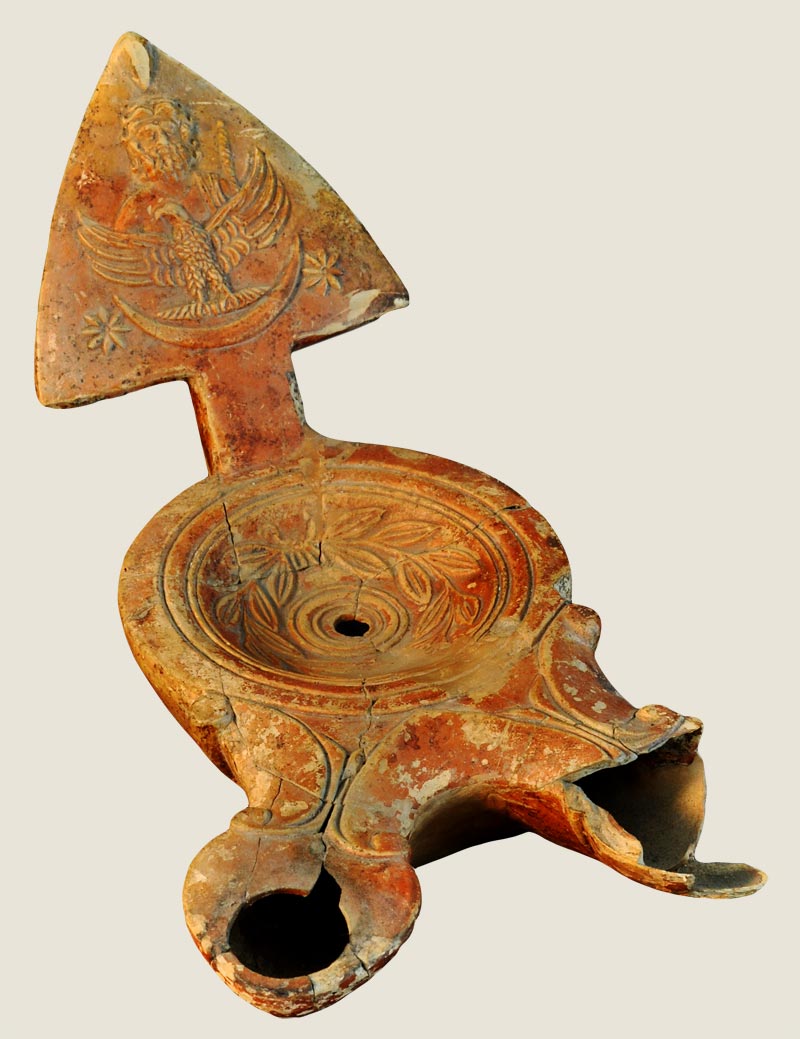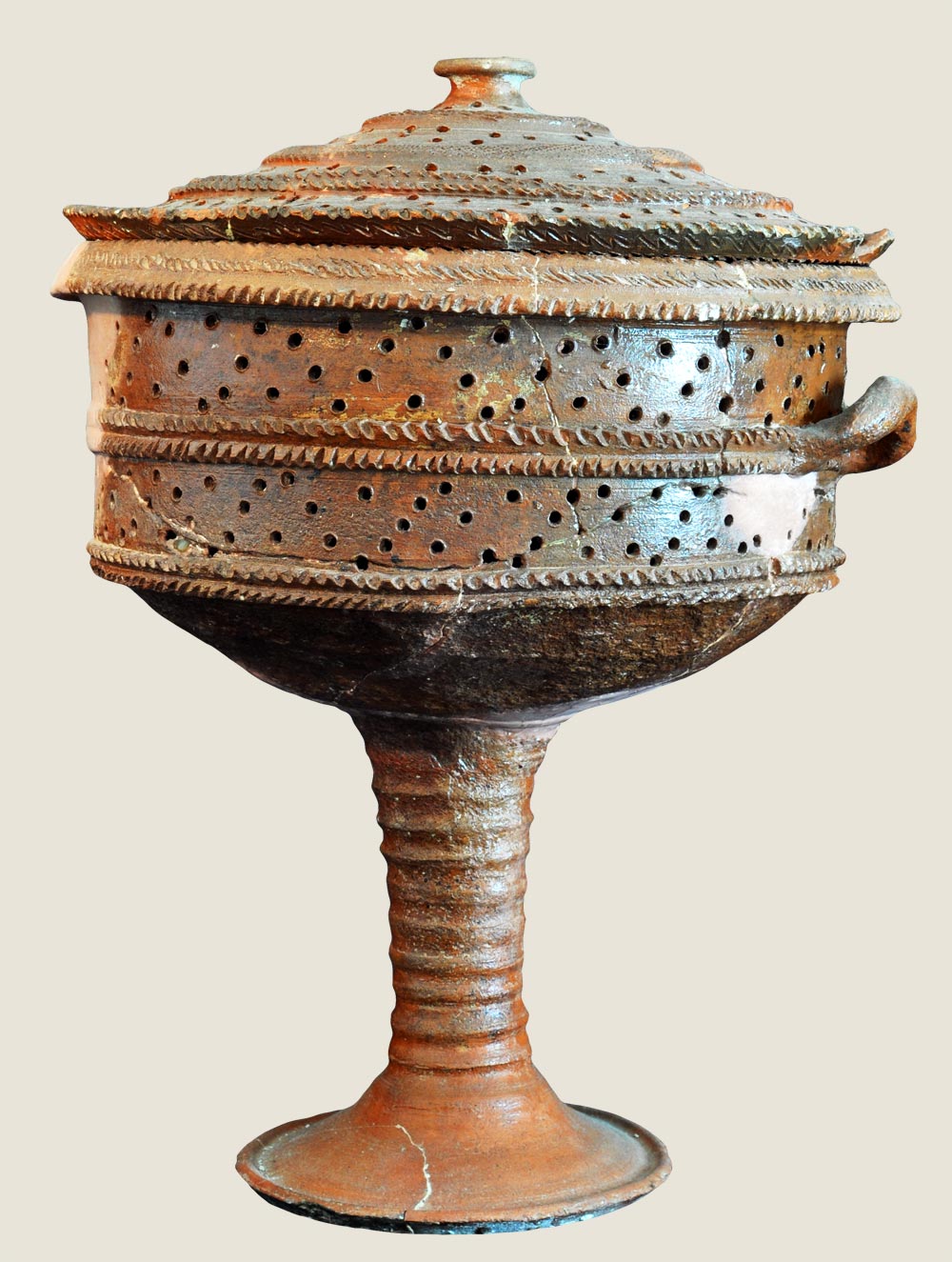
This type of amphora was used to transport fish products from modern-day Portugal, indicating that the inhabitants of Villa A imported food from a considerable distance.
The inscription in red paint refers to a man named Secundus, a slave of a female member of the gens Poppaea, a powerful family in the area around Pompeii. Perhaps Secundus was the vilicus, or estate manager, who received the shipment. Some scholars have supposed, on the basis of this inscription, that Villa A belonged to the emperor Nero’s second wife, Poppaea Sabina, the most famous member of that family. The inscription was covered with a protective coating after excavation, which makes it now difficult to read.




